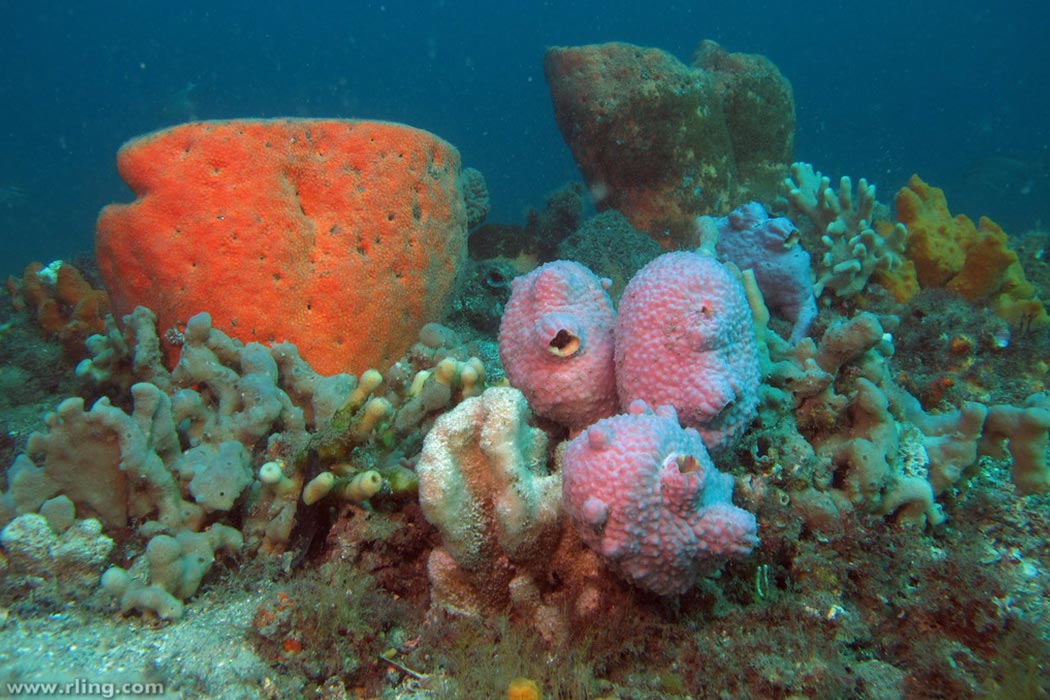A previously undiscovered reef the size of Delaware has been found near the mouth of the Amazon river. The spot is particularly unlikely since it lies beneath the giant plume of muddy water that flows out of the river’s mouth, restricting light and covering the sea floor in sediment. Researchers ran a bottom dredge beneath the plume and pulled up an unexpected assemblage of sponges, fishes and invertebrates. Eventually, they determined that the hidden reef spanned a distance of more than 600 miles. Contrary to most media reports, it is not a coral reef, but a sponge and coralline algae (rhodolith) reef.
Aside from the marvel of finding a new giant reef, the discovery highlights that when it comes to reef building, coral is not the only game in town. Sponges are often overlooked when it comes to reefs. However, sponges offer many of the same attributes as corals to reef organisms, including complex structures, hiding places, and sometimes food. Sponge reefs also have a habit of turning up in unexpected places. Consider the glass sponge reefs of British Columbia. Glass sponges were long thought extinct, known only from limestone rock formations in a few scattered areas. In the 1980s, sonar scans off the coast of British Columbia detected large mounds in otherwise flat seabed terrain. Closer inspection determined that the mounds were living glass sponge reefs.
Glass sponges are fragile but structurally complex. They are composed mostly of silica. Like the Amazon reef, glass sponges are found deeper than your typical coral reef at around 100-200m depth (the Amazon reef is at 90-120m). Much like coral in a coral reef, the glass sponges serve as anchors for a larger community, supporting great diversity of additional sponges, fishes, crustaceans, octopus, and other creatures. The skeletons of dead and broken pieces of sponge also provide plenty of hiding places, so the reef does not even have to be alive to create habitat. The sponges survive mostly off bacteria that eat the methane seeping from the seafloor, a partially chemical-based ecosystem that thrives with little sunlight. If confirmed, glass sponge reefs are only the second known chemosynthetic ecosystem.
Unfortunately, sponges are just as vulnerable as corals when it comes to climate change and anthropogenic threats. The glass sponge reefs already show damage from bottom trawling, and both the glass sponges and the newly discovered Amazon reef lie in the path of oil and gas development. Like corals, many sponges are vulnerable to bleaching when rising temperatures kill or sicken symbiotic photosynthetic organisms. Sponge reefs are in many ways even more vulnerable, as they are often found in less tourist-friendly locations. These remarkable reefs will need just as much conservation help as their flashier cousins, the coral; with any luck this new discovery will bring sponge reefs the attention they need.







